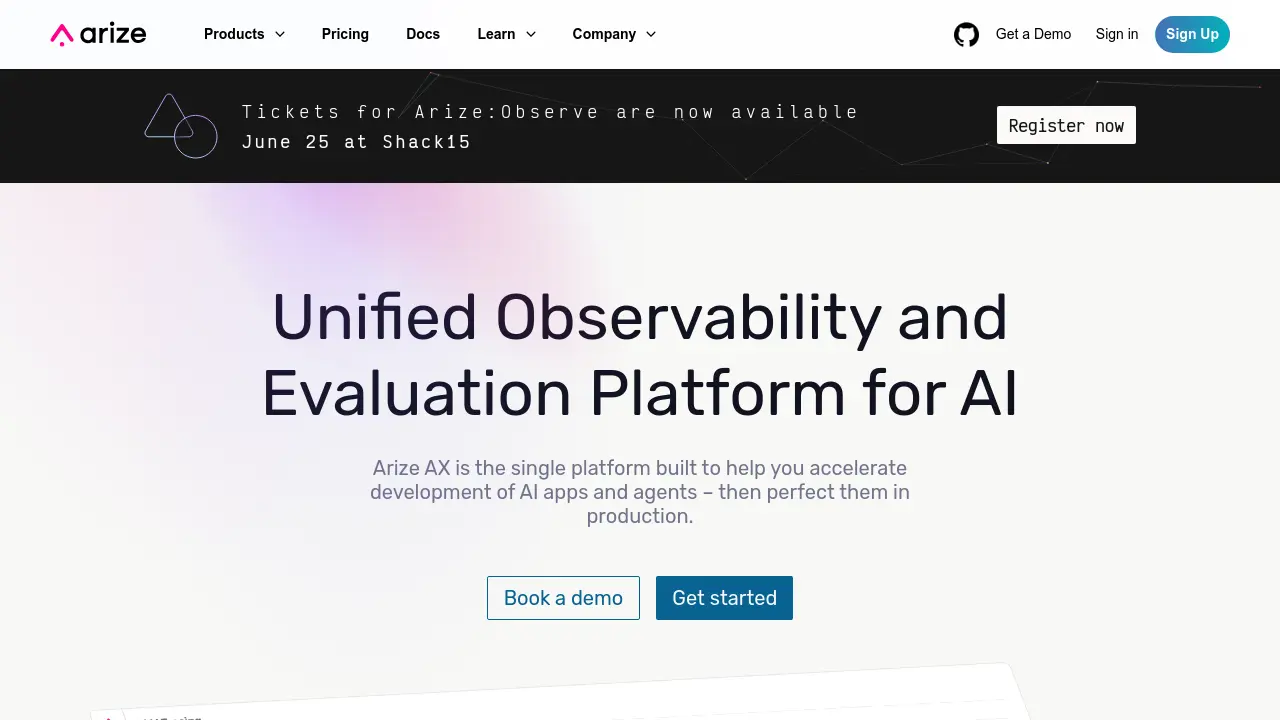Arize AI
Unified Observability and Evaluation Platform for AI

Description
Arize AI offers a comprehensive platform designed to enhance the development and operational management of artificial intelligence systems. It focuses on bridging the gap between AI development and production environments by providing robust observability and evaluation tools. The platform enables teams to integrate real production data into their development cycles, facilitating a data-driven iteration process. This ensures that model improvements are informed by actual performance, while continuous monitoring aligns production behavior with established evaluation benchmarks.
Key capabilities include automated tracing for generative AI applications, allowing for end-to-end visibility into prompts, tool calls, and agent behavior without complex setup. Arize AI supports continuous evaluation throughout the AI lifecycle, from offline checks during development to scaled online monitoring in production. It features tools for production monitoring with automated anomaly detection, root cause analysis, drift detection across features and models, and embeddings analysis. The platform also incorporates a Prompt & Evaluation IDE, dataset curation, and annotation features to streamline the AI improvement process, ultimately helping teams deliver more reliable and effective AI outcomes.
Key Features
- GenAI Tracing: Provides instant, end-to-end AI visibility with OTEL instrumentation for prompts, variables, tool calls, and agents.
- Continuous Evaluation: Automates offline and online evaluation checks from development through production, including LLM-as-a-Judge insights.
- Production Monitoring: Offers real-time AI monitoring with automated anomaly detection, root cause analysis, auto-thresholding, and smart alerts.
- Prompt & Evaluation IDE: Integrates tools like a prompt playground, prompt hub, evals builder, and dataset curation for iterative improvement.
- Annotations & Labeling: Combines human input with automated workflows for generating high-quality labels and annotations.
- Root Cause Analysis (RCA): Helps pinpoint model failures using heatmaps, slice identification, and explainability tools.
- Drift Detection: Continuously monitors feature and model drift across training, validation, and production.
- Embeddings Monitoring: Tracks embedding drift for NLP, CV, and multi-modal models to prevent silent failures.
- Performance Optimization: Facilitates dataset augmentation and curation for experimentation and A/B testing.
Use Cases
- Monitoring AI model performance in production
- Evaluating LLM and Generative AI applications
- Debugging AI agent behavior
- Detecting and analyzing model drift
- Performing root cause analysis for AI failures
- Optimizing prompts and model inputs
- Curating datasets for model retraining and improvement
- Comparing model performance across experiments (A/B testing)
- Ensuring AI reliability and trustworthiness
You Might Also Like
Debexpert
Contact for PricingGet Top Dollar Bids for Your Accounts
AIWriter
Free TrialThe Ultimate Content Creation Tool
Kokoro TTS
FreemiumEfficient AI Text-to-Speech with Natural Voices
Dubb
FreemiumGrow your sales by 10X with AI, Automation, & Video.
Geckoboard
Free TrialBroadcast real-time data. Drive team performance.